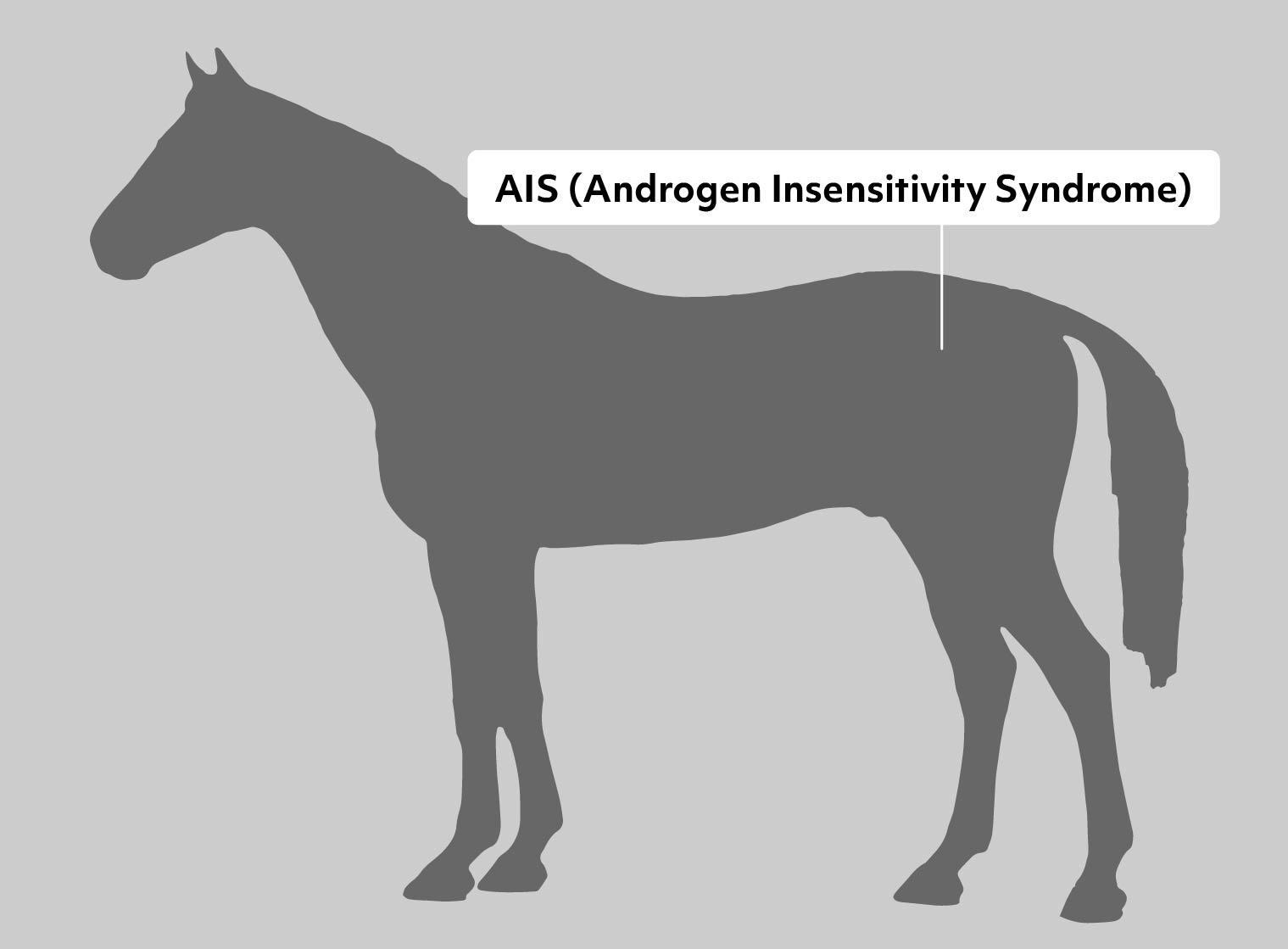Androgen Insensitivity Syndrome (AIS)
Gene or Region: AR
Reference Variant: A
Mutant Variant: G
Affected Breeds: Quarter Horses
Research Confidence: High - Findings supported by other species
Explanation of Results: AIS/AIS = homozygous for Androgen Insensitivity Syndrome, not observed AIS/n (female) = heterozygous for Androgen Insensitivity Syndrome, female carrier AIS/n (male) = heterozygous for Androgen Insensitivity Syndrome, sterile and phenotypically female n/n = no variant detected
General Description for Androgen Insensitivity Syndrome
Androgen Insensitivity Syndrome (AIS), previously known as Testicular Feminization Syndrome, is a disorder of sexual development in which a horse with a XY SRY+ karyotype appears female. Horses with AIS exhibit stallion-like behaviors, have external female genitalia, and often internal un-descended testicles.
AR is a steroid-activated transcription factor that plays a key role in normal sexual development. Mutations in other species have been noted to cause AIS and have been associated with prostate cancer. This particular mutation is a single base change that alters the start codon of the encoded protein. Though normal transcription and translation still occurs, the encoded protein likes has an altered function.
References
Révay T et al., “GTG mutation in the start codon of the androgen receptor gene in a family of horses with 64,XY disorder of sex development.” (2012) Sex Dev. 6: 108-16. PMID: 22095250
More Horse Health
Junctional Epidermolysis Bullosa 1
Junctional Epidermolysis Bullosa (JEB), also known as red foot disease or hairless foal syndrome, results in the inability to produce the proteins needed to keep the skin on the body. Affected foals exhibit symptoms within days of birth, including blisters at the pressure points, detatchment of the hooves, and oral ulcers. As there is no treatment, affected foals are humanely euthanized.
Kissing Spines Susceptibility Risk
Kissing Spines Susceptibility (KSS) evaluates a horses genetic risk for developing Kissing Spines. Horses diagnosed with Kissing Spines will have two or more dorsal spinous processes that are too close together, touch, or even overlap. This bone-on-bone grinding causes varying degrees of pain, and thus decreased mobility.
Lavender Foal Syndrome
Lavender foal syndrome (LFS), also known as coat color dilution lethal, is a neurological dysfunction in newborn foals. Symptoms are apparent at birth and include seizures, severe hyper-extension of limbs, neck and back, stiff paddling leg movements, involuntary eye movement and inability to stand or sit upright. The coat usually has a dilute color that ranges in shade from silver to a pale lavender/pink. As there is no treatment, affected foals are humanely euthanized.
